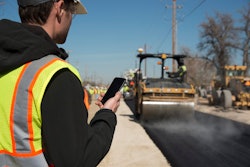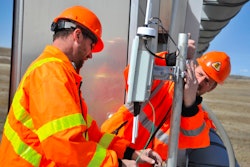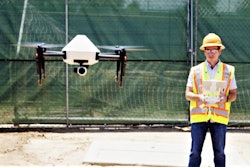
With the holidays coming up and each major smartphone maker having released their flagship models for the year, it’s time to take a look at the best options those in the construction industry have at their disposal.
I’ve ordered this as a ranked list in the past, but this year I’m doing something a bit different. Since most of you will have a preference for either Android or iOS, I’m not going to rank these devices because I don’t think ranking an Android device over an iOS device or vice versa is doing anyone who isn’t considering switching platforms any good.
These five phones are the phones that I would recommend anyone that works a trade to consider based on four factors: price, durability, performance and camera quality. None of them nail all of these factors, but they all nail at least a couple. Let’s dig in.
Kyocera DuraForce PRO 2
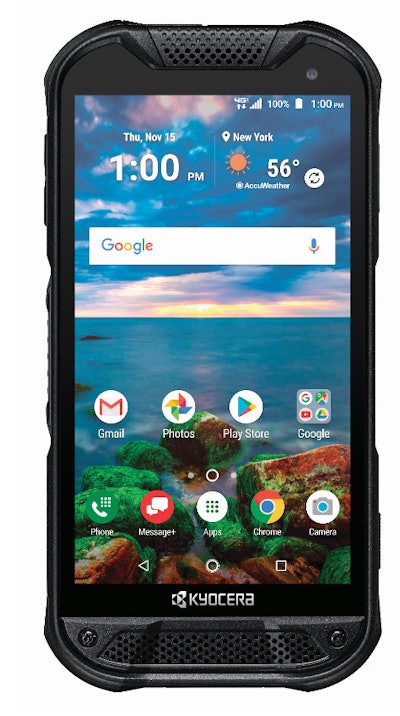
If you’re looking for a cheap Android device that can take a beating, you can nab the Kyocera DuraForce PRO 2 at Verizon for only $444, or $18.50 per month. The device features an IP68 dust- and waterproof rating (6.5 feet deep for up to 30 minutes) and Military Standard 810G-rated protection against drops, vibration, humidity and temperature extremes.
Those working in environments where many phones are disallowed due to spark risk will be pleased to know that the DuraForce PRO 2 is also certified Non-Incendive Class 1, Division 2. It can be safely used in plant and field operations where concentrations of flammable gas, vapors or mists may exist.
Beyond the ruggedness of the phone, there’s one other pretty unique feature: a very loud speaker. Kyocera says the front speakers on the phone can reach 106 dB. That’s just a bit quieter than a rock concert, but louder than the sound of a jet flying 1,000 feet above your head. That loud speaker is combined with four noise cancelling front mics, allowing you to make a take push-to-talk and speakerphone calls on a bustling, noisy jobsite.
Other features include a 5-inch sapphire display Kyocera calls “virtually scratch proof,” a fingerprint sensor built into the power button, gloved and wet screen operation, expandable storage to 512 MB, a 13-megapixel and 4K camera, and a two-year warranty.
Samsung Galaxy Note 9/S8 Active
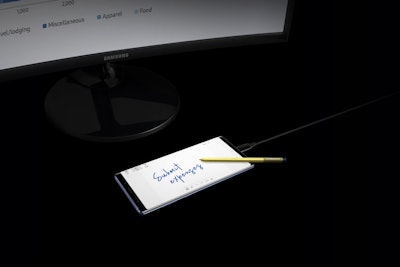 The Note 9 can be connected to a desktop monitor and used as a computer.
The Note 9 can be connected to a desktop monitor and used as a computer.Last year, our top recommendation was the Samsung Galaxy S8 Active, a phone I described as a true “no compromise” device since it has rugged credentials, a great camera and awesome, top-of-the-line performance.
Unfortunately, a new version of the device has not been released this year and it’s looking like the S8 could be the last Active model Samsung releases. Bummer.
But if you’re a Samsung fan and depending on your phone as a primary computer from the jobsite, I’d suggest opting for the Note 9.
Yes it’s big and yes it’s expensive, with configurations reaching up to $1,500. However, and this goes for the other expensive phones on this list, you’re getting a lot of device for your money and, think about it this way: some people don’t blink an eye at $1,500 laptops. But what device do most people use most of the time, phone or laptop? And which device does more?
Price debate aside, the Note 9 doesn’t have the rugged features of the Kyocera device above or the Cat phone we discuss below, but it’s still a device built for productivity. First, it features Samsugn’s S Pen stylus which not only lets you write down notes, markup documents and more, it now features a button that allows you to perform remote tasks like advancing slides in a presentation or snapping a photo from a tripod.
Plus, the Note 9 can be plugged into a computer monitor and used like a desktop computer. (Note the word “like.” There’s no Windows installation. Instead, you’re activating Samsung’s DeX feature which displays Android in a desktop environment.)
In sum, the Galaxy Note 9 is one of the highest-performing Android smartphones you can buy, it has a great camera, cool productivity features, a phenomenal 6.4-inch 4K OLED display, a nice, big battery for what The Verge calls “true, all-day battery life even for the heaviest of users,” and up to 512GB of storage with microSD support.
Apple iPhone XR, XS, and XS Max
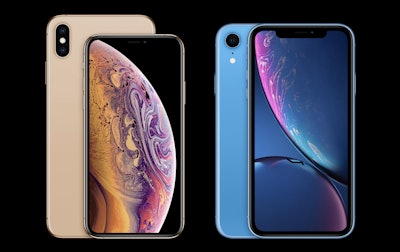
As we get into Apple’s latest and greatest, let me save a lot of you some trouble: If you’re trying to decide between buying an iPhone XR or an iPhone XS/XS Max, ask yourself this: do you want a second lens for higher quality zoomed in photos, a slightly higher-quality screen, and a stainless steel housing rather than aluminum? If the answer is yes and you’re willing to shell out an extra $250-350, buy the iPhone XS or XS Max.
If you don’t want those things, get the XR, which has the same main camera and internals as the more expensive XS and XS Max. The primary difference with the XR is its Liquid Retina display. The XS and XS Max both have OLED displays, which offer a higher image quality. But the Liquid Retina display is no slouch. Most folks likely wouldn’t be able to tell an OLED and a Liquid Retina display apart. Plus, the Liquid Retina screen is the same one Apple has put in its new iPad Pros.
Beyond near feature parity with the XS and XS Max while undercutting both devices by hundreds of dollars, the XR also gets better battery life.
Dollar for dollar, the XR is the best iPhone you can buy. What may push some toward the XS and XS Max is the smaller size of the XS, compared to the XR, and the larger size of the XS Max.
Cat S48C
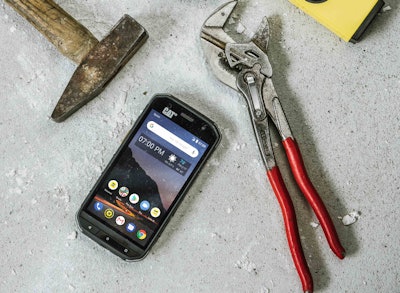
For the most part, Bullitt Group, the company that makes Caterpillar’s line of licensed Android phones has designed Cat Phones to be impervious to the rough conditions of construction work and affordably priced. The firm’s previous phone, the Cat Phone flagship S61, eschews that second design consideration with a $1,000 price tag. But, with a built-in FLIR camera, laser distance measuring, an air quality sensor and other features, Bullitt argues that you are getting much more than just a phone when you buy the S61. They see it as a pricey new digital take on the Swiss army knife.
But as I noted in my review of the S61, despite the thermal camera and other whizbang features, at $1,000 it is hard to recommend the S61 when, for the same money, other smartphones offer way more processing power and better cameras. The Cat Phone lineup has been at its best when pricing devices in the $500 range while offering ample processing power, durability, a stock Android experience and extreme durability. And those are the primary goals behind the S48C.
The S48C offers nearly the same rugged specifications as the more expensive S61: IP68 waterproofing vs. IP69 on the S61, and the same MIL810G standard which ensures the phone can survive drops from up to 6 feet. The S48C also has one new rugged design feature: a metal plate in the middle of the device to maintain the rigidity of the phone when it is dropped.
Apart from being highly durable, the S48C is also the first Cat Phone to be given a Non-Incendive rating of Class 1, Division 2, allowing it to be used in hazardous work environments that restrict electrical devices that could produce a spark.
Priced at $480 or $20 per month with a lease through Sprint, the S48C will be is essentially an S61 without all the bells and whistles. Stripping away the thermal camera, air quality sensor, laser measuring and other features is what brings the S48C into a much more affordable price range. However, you still get the same processor, camera, screen and other important features found on the S61, which Bullitt considers to be its best phone to date.
The S48C also has a huge 4,000 mAh battery (more than enough for a full day’s use), a super bright display and 32 gigabytes of storage that can be expanded up to 128 GB with a microSD card. It’s powered by a mid-range Snapdragon 630 processor and is outfitted with 4GB of RAM. The phone features push-to-talk, a 13 megapixel camera on back with a 4MP camera on the front and can be used to take photos underwater. The display is 5 inches in size with a 1080p HD resolution and the ability to be used with gloves and when wet.
Google Pixel 3 and Pixel 3 XL
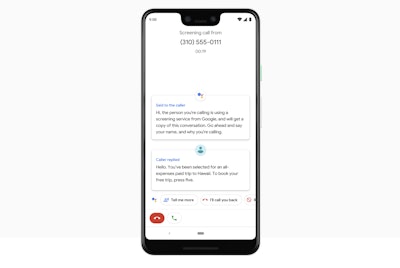 Pixel 3 XL
Pixel 3 XLFor Android users who want a pure Google experience without Samsung, or LG, or any number of other phone makers meddling with the operating system’s look and feel, the Pixel 3 and Pixel 3 XL are the devices for you.
And when it comes to choosing between Google’s phones, the choice here is a bit simpler than over on Team Apple. Do you want a bigger screen? Get the Pixel 3 XL. If not, get the Pixel 3.
Beyond being the most favorably reviewed Android phones, the most talked about feature when it comes to the Pixel 3 and Pixel 3 XL is the incredible quality of the cameras. For years Apple has been the leader when it comes to smartphone cameras, but with the introduction of the Pixel 2 last year, Google has seized the throne from Apple in that regard.
And Google’s not sitting still with that lead. Apart from improved image quality over the Pixel 2 devices, the Pixel 3 phones have some all-new camera features:
- Night Sight: Using a blend of artificial intelligence and machine learning, Google’s new Night Sight feature takes photos in near darkness and makes them look like they were taken in much brighter conditions. It’s a truly incredible feat and if you take a lot of photos in dark environments, Night Sight alone may be worth the price of admission to a Pixel 3.
- Top Shot: This feature allows you “rewind” a photo to the exact moment you wish the you had snapped the shutter.
- Wide-angle selfies: A second lens on the front of these phones has an ultra-wide angle letting you squeeze in more people and see more of where ever it is you’re taking the photo.
Apart from the camera goodies, you’re still getting a top-of-the-line Android device with a Snapdragon 845 processor (same as found in the Samsung Galaxy S9 and Note 9), 4GB of RAM and IP68 water resistance. The Pixel 3 screen is 5.5 inches while the Pixel 3 XL screen is 6.3 inches.

